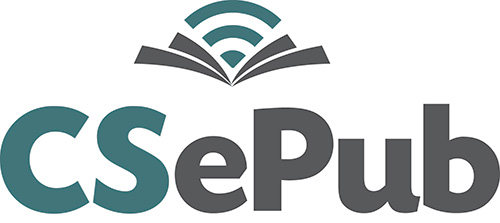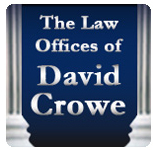A Roll of the Dice or As Real as it Gets
A Roll of the Dice or As Real as it Gets
We were nine months into the pandemic when I was stopped cold in my tracks by a dilemma: The odds of landing on a certain number from 1 to 6 with one roll of a die is one in six—there are six faces on a die: One-sixth. There is a 16.67 % chance of rolling the number 6, for example, on a single roll of a die.
But what if I roll two dice? What are the odds of landing on the number 6 with either of the two die? The odds for each die remain the same, but common sense suggests my chances increase when I roll two. But do they, and if so, by how much? Do my chances double, are my odds now two in six, or 33.33%? After all, I did double the number of rolls. This was a pandemic conundrum, a riddle birthed in isolation. I assumed there is some simple equation to calculate the correct percentage, like A + B x 2 – 3 = Answer, and I searched my memory for some forgotten fragment of a long-lost formula once learned in grammar school, but alas, the cupboard was bare. No need to despair, the world wide web, that great receptacle of answers to everything, was only a finger-tap away.
Before I typed my question into the search bar and flung it into the netherworld of the internet, I made my own prediction. Applying my own powers of reason and deduction, which I have been told are extraordinary and penetrating, I felt that the odds of rolling the number 6 would certainly increase by rolling two dice instead of one, but that it wouldn’t double, that didn’t seem right either. The percentage, I surmised, was an equal tug between the two poles, and would land midway between 16.67 and 33.33%, about 24 – 25%: My prediction of the probability of landing on the number 6 with either of two die on a single roll is that it will occur about one out of every four rolls.
The next step was to check the accuracy of my prediction of the probability so I typed the following question and pressed “Enter”: What are the odds of landing on the number 6 with either of two die on one roll? Page after page of websites appeared with headers such as “Dice and the Laws of Probability,” “Probability: Rolling Two Dice,” “Dice Roll Probability,” “Dice Roll Calculator,” “Probability and Dice,” “Rolling the Dice,” and on and on and on and on. Even choosing a site to peruse was a daunting task and upon first glance, the assorted charts, graphs and complicated equations caused my eyes to glaze over in resistance. On many of the sites a question dealing with probability was asked in the header of a page and underneath mathematicians would work out their formulas in a long chain of equations—indecipherable hieroglyphics as far as I was concerned—and post his or her final answer. Oftentimes, others disagreed and were quick to point out computational errors in another’s work, sometimes dismissing the answer in its entirety with a single swipe: The work of an amateur. It was obvious that many of those posting answers were formidable mathematicians and they spoke an argot peculiar to their breed. Instead of the simple formula I was seeking, I’d fallen into a rabbit hole of probabilities.
I started to read the responses more closely, trying to understand the concepts expressed, and I noticed many complex equations, though apparently correct, didn’t answer the question asked. For example, even though the question posted at the top of a page was: What are the odds of landing on the number 6 with either of two die on one roll? the responses answered a dozen different queries. One person worked out the equation for rolling number 6 with both dice, another for rolling a 6 with one die but anything but a 6 with the other, another the odds of not rolling a 6 with either die, and on and on. On many pages responses curved away from the question asked like an elbow bend in a river, going further and further afield until it entered the realm of the absurd.
Surely somewhere, I thought, in the bowels of one of these numerous sites, the correct answer lies buried, I just needed to double down on my resolve and stay down in this rabbit hole a little longer, even if it was actually a vast warren instead. After considerable effort, I finally came across a page that appeared to reveal the correct answer, but I had to step through mud and crawl under a few barbed-wire fences just like Pappillon before I reached the promised land. I have pasted this page at the end of this essay and labeled it as “Exhibit 1.” To understand the principles expressed therein a reader will have to sift through the jargon, grasp the visual scaffolding of certain equations, and discard those replies that answer a question not asked, and after doing so, should see the correct answer appears to be an 11 out of 36 probability. Ergo, there is a 30.56% chance of rolling the number 6 with either of two die on one roll, about three out of every ten rolls, according to certain probability specialists.
But I was unsated, like I had eaten at an overpriced restaurant and was leaving hungry. I realized these calculations only dealt with probabilities and I wanted actualities: I needed to know what would actually happen if I rolled the dice because even though I knew what probability suggested, I am improbable, incomprehensible, I defy logic every day. I refuse to bow down to a “law of averages,” and I even deny that an average of anything is a “law,” it’s simply a midrange point along a spectrum. You see, sometimes I get hot rolling dem bones and they land on the numbers I will them too—there’s a mysterious quality about it, something sacred, something you can only feel. It starts with shaking them two little cubes in your right hand just right, holding them loose so they can have a little breathing room, and blowing on them in just the right way to heat them up, and then rolling them dice out of my hands like they were a love song. It doesn’t happen every time, but when I get hot and I’m in the zone and I’m rolling dem bones, I’m living, Bothers and Sisters.
So instead of relying on probabilities, I decided to set my own course. I collected a pencil, a piece of paper with lined columns, and two dice, and I started rolling dem bones. After every roll, I recorded the result. I jiggled them cubes just right, blew on them with a warm breath until I could feel them heating up, and flung them on baize covered surface with a smooth, upwards flick of the wrist. I was in the game, rolling dem bones and hoping to get hot, writing my own answer to the question posed by participating in the cosmic dance, and that, Brothers and Sisters, is as real as it gets.
The Humble Chronicler
(2020 during the pandemic)
EXHIBIT 1
1111 out of 3636? I got this by writing down the number of possible outcomes (3636) and then counting how many of the pairs had a 66 in them: (1,6)(1,6), (2,6)(2,6), (3,6)(3,6), (4,6)(4,6), (5,6)(5,6), (6,6)(6,6), (6,5)(6,5), (6,4)(6,4), (6,3)(6,3), (6,2)(6,2), (6,1)(6,1). Is this correct?
- Yes.----------------Eric Auld Dec 8 '13 at 22:54
- Thank you ! Just wanted to double check :) – FiguringItOut Dec 8 '13 at 22:55
- It's easier to calculate the probability that you roll no 6's, which is (5/6)2 = 25/36, leaving 11/36 probability that you roll at least one. – NovaDenizen Dec 8 '13 at 22:56
- Yes. That 11/36 is a number every backgammon player knows very well... – David C. Ullrich Aug 28 '18 at 23:28
- Or argue that the probability of "6, non 6" is (1/6)(5/6) = 5/36, the probability of "non 6, 6" is (5/6)(1/6) = 5/36, and the probability of two 6's is (1/6)(1/6) = 1/36 so the probability of "at least one 6" is 5/36 + 5/36 + 1/36 = 11/36. –user247327 Sep 18 '19 at 11:40
That's right. The easier approach would be to calculate the chance of not rolling a 6 - that's just 5/6 for the first die, and 5/6 for the second die, so by the product rule (as the events are independent), the probability is 5/6 ⋅ 5/6 = 25/36.
Then the probability of rolling a 6 is 1 minus the probability of not rolling a 6, which we just calculated: so it is 1 − 25/36 = 11/36.
If calculating the probability of an event not occurring to calculate the probability of it occurring feels weird to you, you might want to read up on complementary events. The idea here is that the product rule can sometimes make probabilities smaller when that wouldn't make any sense --- in our example, if you had just multiplied 1/6 ⋅ 1/6 = 1/36, then that would've been obviously wrong. This is because when we work with probability, we're dealing with quantities in the [0,1][0,1] interval, so multiplication usually makes things smaller, rather than larger.
– Newb Dec 8 '13 at 23:02
Yes indeed, you've got them all. So counting them, we get 11 of the possible 36 outcomes of which at least one 6 is rolled. Now simply express this probability as a fraction!
– amWhy Dec 8 '13 at 22:54
http://www.wolframalpha.com/input/?i=chance+of+throwing+1+6%27s+with+2+dice
X = # of occurrences of 6 with 2 dice
P(X=1) = P(the first dice has 6, the second hasn't) + P(the second dice has 6, the first one hasn't) = 1/6 * 5/6 + 5/6 * 1/6 = 5/ 36 + 5/36 = 5/18 = 0.2778.
Which is also what Wolfram Alpha computes.
Then P(X=2) = 1/6 * 1/6 = 1/36.
5/18 + 1/36 = 11/36, which is indeed the answer.
– constructor Jun 20 '14 at 13:11















